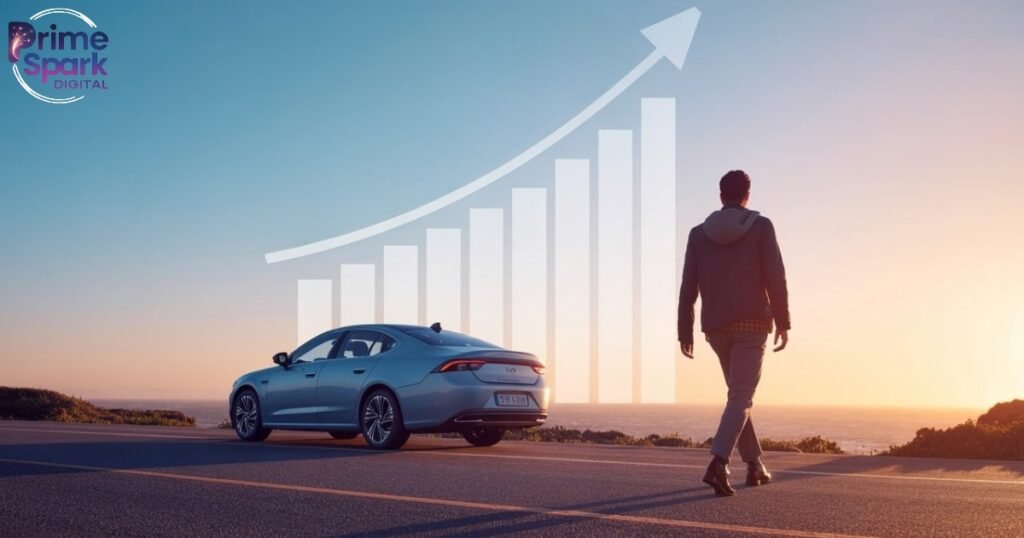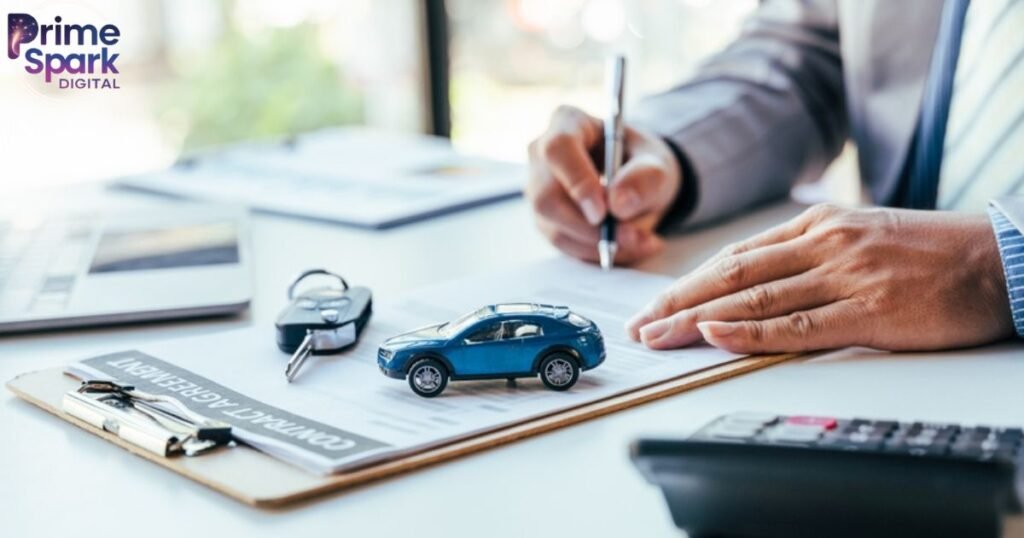Can I trade in a financed car? It’s a question many car owners face when upgrading to a new vehicle before paying off their existing loan. The short answer is yes—you can trade in a car that still has an outstanding balance. However, the process involves more than just handing over your keys. You need to understand how vehicle equity, your auto loan payoff, and your car’s trade-in value affect the deal. Whether you have positive equity or negative equity, knowing your financial position is crucial. In this guide, we’ll explain everything you need to know to make a smart decision and avoid common mistakes when trading in a vehicle with a loan.
Quick Answer: Yes, But There’s More to It
Yes, trading in a vehicle with a loan is completely possible. When you owe money on a car, the dealer trade-in process includes paying off your loan and applying the rest as credit toward your next car. If the car is worth more than you owe, you have positive equity. That money helps lower your new car loan or your out-of-pocket costs.
But if your car is worth less than your payoff amount, you have negative equity. That means you owe more than what the car is worth. This can make trading in a car after financing more complicated. You might end up rolling negative equity into a new loan, which increases your debt.
What Does It Mean to Trade In a Financed Car?

When you trade in a car with a loan, the dealership pays off your remaining auto loan payoff directly to your lender. Then they apply the car’s trade-in value to your next purchase. If there’s any leftover vehicle equity, you can use it as a down payment.
Here’s an example: You owe $10,000 on your loan. The dealership offers $13,000 as the used car trade-in value. That $3,000 in positive equity can go toward your new car budget. But if the car is only worth $8,000, you have negative equity. In that case, the $2,000 shortfall may be added to your new loan.
Can You Trade In a Car With a Loan Balance?
You absolutely can. This is common in the U.S. car market. But understanding the difference between equity in vehicle and loan balance matters. Use a car equity calculator to compare your car’s Kelley Blue Book value or J.D. Power car value with your loan’s payoff amount.
When you’re in an upside-down loan, the dealer still processes your auto loan payoff, but you may need to pay extra to close the gap. This is especially true if your FICO® Score or Experian credit report won’t qualify you for great auto refinance rates on a new deal.
Pros and Cons of Trading In a Financed Car
Benefits of trading in a financed car include convenience. You don’t have to worry about selling it yourself. Dealers handle the payoff letter, vehicle registration, and sometimes even the proof of insurance needed for the new vehicle. It’s fast, and you can apply any positive equity to your next purchase.
However, there are risks. If you have negative equity, it may increase your car loan interest rate or your overall debt. That’s called a car loan rollover risk. Some buyers end up with long-term payments that reduce financial flexibility. This makes rolling negative equity into a new loan something to avoid if possible.
Step-by-Step: How to Trade In a Financed Car
The car trade-in process starts with checking how much you owe. Get your payoff letter from the lender. Then research your vehicle’s value using tools like Kelley Blue Book or J.D. Power car value reports. This shows your estimated trade-in value.
Next, go to different dealerships. Let them inspect the car and make offers. Compare those offers and then negotiate. Once you choose a dealer, they’ll pay off the loan and help with the new financing. Make sure you get all terms in writing—including the new monthly car payment, any fees, and trade-in details.
| Step | Action |
| 1 | Get your loan payoff letter |
| 2 | Check Kelley Blue Book value or J.D. Power |
| 3 | Get offers from multiple dealers |
| 4 | Negotiate both car trade-in and new car loan separately |
| 5 | Ask for all documents in writing |
| 6 | Confirm the dealer will pay off your car loan |
| 7 | Finalize your new car purchase with trade-in |
Trading In a Car With Negative Equity: Smart Solutions

If you have negative equity, don’t panic. There are smart ways to handle this. One way is making a lump-sum payment to reduce what you owe before trading it in. Another is waiting a few months while continuing payments, letting your vehicle equity improve.
Some buyers choose to refinance the auto loan first. A lower car loan interest rate could improve your situation. Avoid adding GAP coverage to your next loan unless you understand the costs. In some cases, it makes more sense to sell the car privately and use the proceeds to cover the auto loan payoff process.
Alternatives to Trading In a Financed Car
Sometimes, trading in a car with a loan isn’t your best option. A private-party transaction can give you more money. Selling your car to an individual takes longer but may offer a better return than a dealer trade-in. You’ll still need to pay off the loan, but the buyer may wait for the title release.
Another option is refinancing a car loan. If your credit score for auto loan approval has improved, you may qualify for lower auto refinance rates. This reduces payments and buys you time until you can trade in or sell at a better value.
Tips to Get the Best Trade-In Deal
To get top dollar for your used car trade-in, make it look its best. Clean the car inside and out. Fix small issues. Gather documents like vehicle registration, proof of insurance, and maintenance records. These help build trust with dealers and increase your trade-in value.
Don’t forget to negotiate. Use your Kelley Blue Book value as leverage. If one dealer gives a low offer, ask others. Keep your trade-in and purchase negotiations separate. Focus on the total deal, not just the monthly car payment. Always confirm the dealer will get written confirmation of payoff before signing.
Final Thoughts: Is Trading In a Car With a Loan a Good Idea?

So, is trading in a car with a loan a good idea? It depends on your financial situation. If you have positive equity, it’s usually a smart move. You can apply that value toward your next car and lower your new car loan. But if you’re stuck with negative equity, you have to think carefully.
Consider your options: sell vs trade in financed car, make a lump-sum payment, or refinance auto loan terms. Either way, understanding the steps and risks helps you make a decision that fits your long-term goals.
Knowing how to trade in a financed car the right way can save you thousands. It protects your credit, gives you a stronger financial future, and makes your next car purchase easier and smarter.
FAQs
Is trading in a financed car a good idea?
It can be smart if you have positive equity or a solid plan for handling negative equity. Just make sure the car trade-in process doesn’t hurt your finances.
Is it possible to trade in a car that isn’t paid off?
Yes, you can trade in a car with loan, but the dealer pays off car loan as part of the deal—be sure to know your payoff amount first.
Can you trade in a car you still owe money on?
Absolutely, but your auto loan payoff and equity in vehicle will determine how much value you bring to the next deal.
How soon can you trade in a financed car?
You can do it anytime, but early on you may have negative equity, so use a car equity calculator to check.
How to get rid of your car if you still owe money on it?
You can sell car privately, refinance the loan, or trade it in—just make sure to cover the loan payoff amount.
Does trading in a car hurt your credit?
It might cause a small dip due to a credit score for auto loan check, but consistent payments protect your FICO® Score.

I’m Talal Khan founder of Prime Spark Digital, a passionate blogger, digital enthusiast, and an SEO specialist. With a keen eye for digital trends and a dedication to delivering value-packed content. I helps readers stay informed and inspired in the ever-evolving world of online media. Thanks for stopping by





